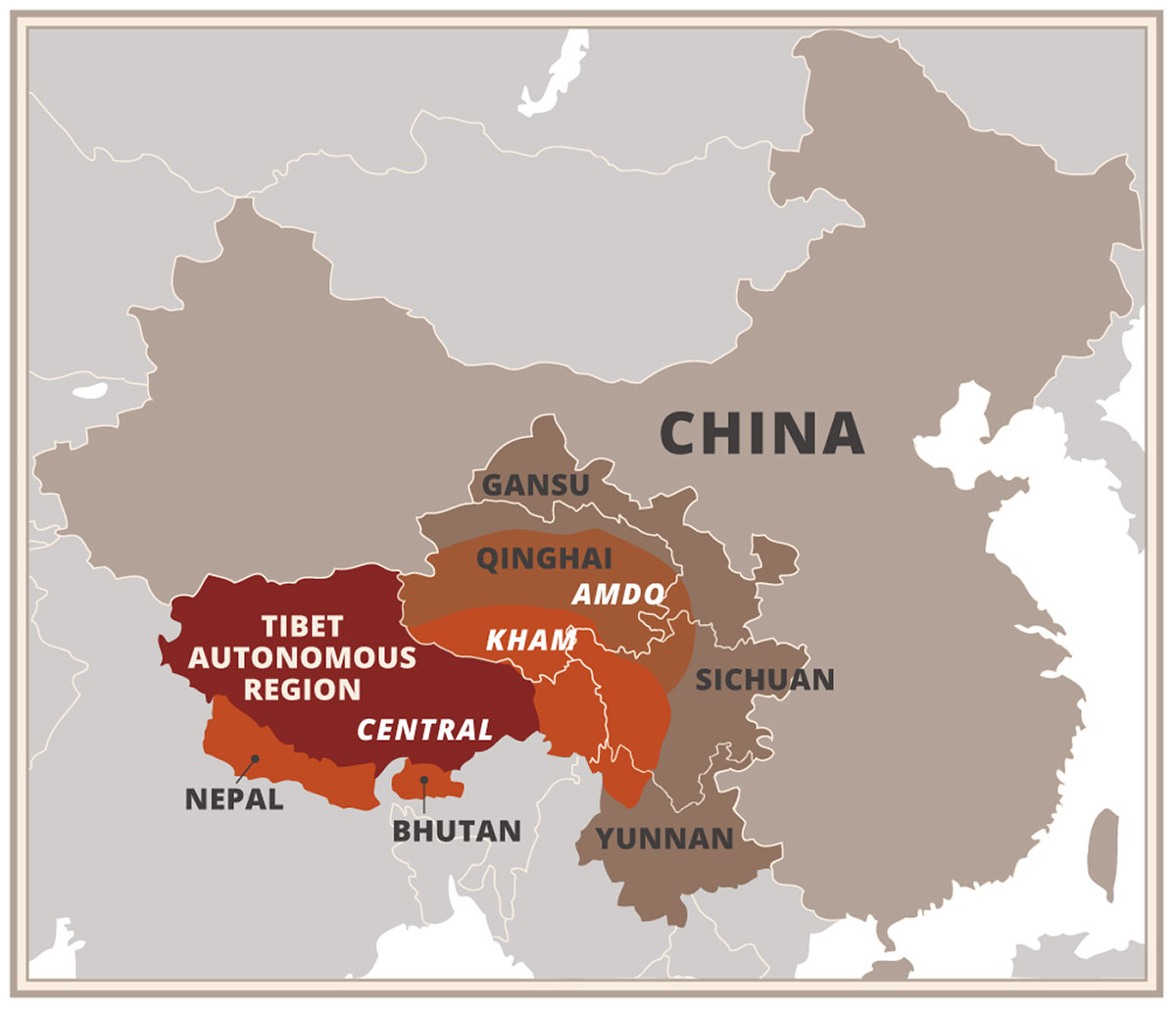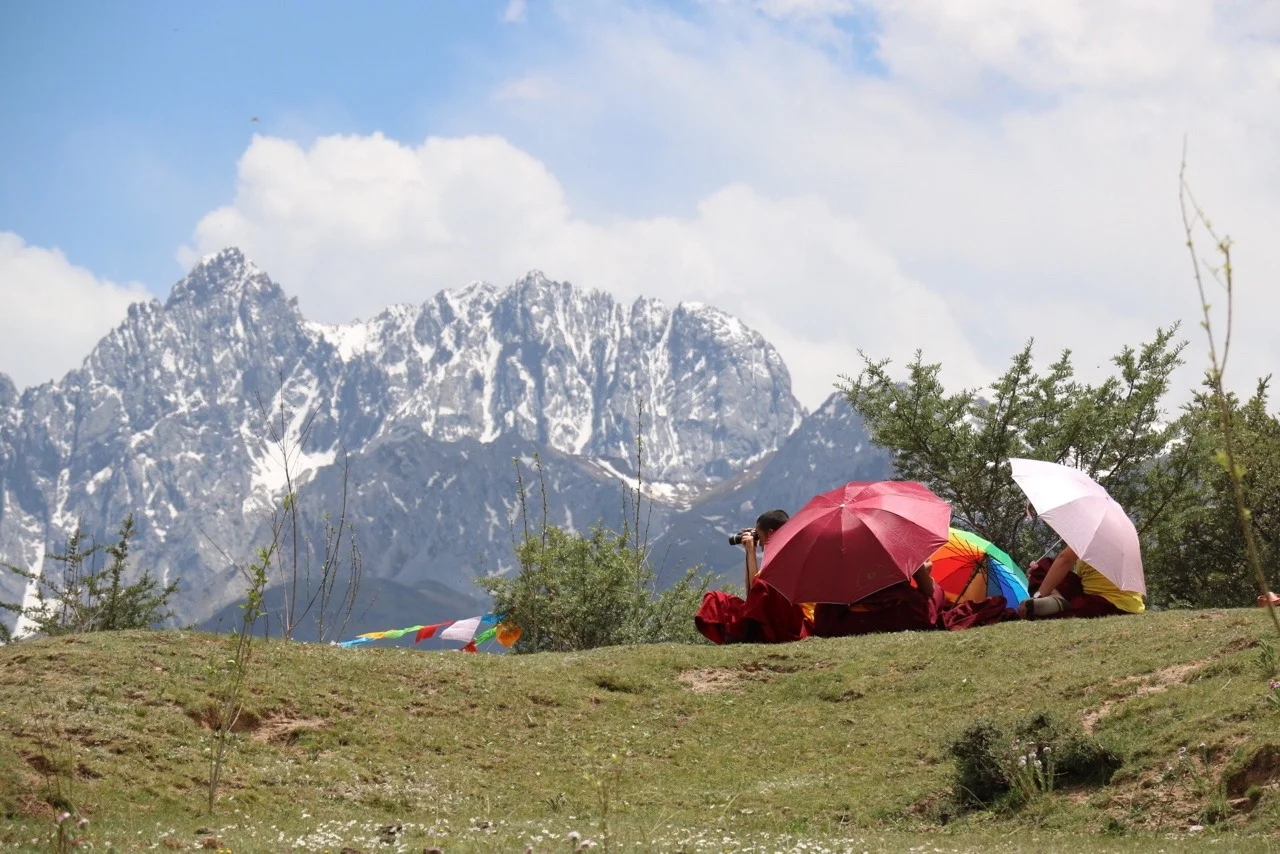A couple of years ago if someone had told me that I’d find more authentic Tibetan experiences outside of “Tibet” than inside it, I’d have laughed at them. But after travelling in the Kham region – an area that is in China’s modern day Sichuan and Yunnan provinces – my eyes have been opened to the untouched world of Tibetan culture and traditions that have been preserved in this remote corner of the Tibetan plateau.
Historically, Tibet was made up of three main provinces: U-Tsang (central Tibet), Amdo (northern Tibet), and Kham (eastern Tibet). These days, what we see marked as “Tibet” on our maps is in fact only central Tibet and is now called the Tibet Autonomous Region (TAR). Provincial borders were drawn through Amdo and Kham to assimilate these regions into the Yunnan, Sichuan, Qinghai and Gansu provinces of modern China.
In Kham these lines on the map haven’t disturbed the strong Tibetan traditions that have been deeply rooted here for centuries. In fact, due to the remoteness and inaccessibility of many of the Tibetan villages in Kham, they’ve been left relatively untouched by the modern developments going on in Lhasa and central Tibet.
Khampas, as the people are known, are famous for being horsemen and proud warriors. You can see them strutting through small towns such as Tagong or Litang, patriotically adorned in their traditional clothes and jewellery. In the grasslands their horses graze alongside herds of yaks, beneath snow-capped mountains and perfect blue skies.
Nomads’ black yak-hair tents dot the mountains. The warmth of their tents is only surpassed by their kindness, as you are welcomed into their home for a brew of tea or a taste of some local food – fresh yoghurt, dried meat jerky, and their staple tsampa. The food takes a little getting used to, as it’s simple and often lacking in flavour except for some chilli paste, but it’s hearty and what you need in the high altitude weather.
Appearing in brilliant contrast against the blue sky and green rolling hills is the golden glittering roof of a monastery. The grandeur of monasteries in Kham can be overwhelming at first as they are richly decorated with paintings and statues dripping in colour and gold. Is this really a place of renunciation? But then you see the modesty of the local pilgrims offering their prayers and money to the temple as they have done for centuries, and the monks humbly accepting it on behalf of all sentient beings for the purpose of bringing enlightenment to all. This is a place of real compassion.
Tibetan Buddhism has been able to flourish in Kham and Amdo in a way that it couldn’t possibly do in central Tibet. Because Kham and Amdo now belong to Yunnan, Sichuan, Qinghai and Gansu province the regulations are far fewer – including a notable lack of permits required for foreigners to travel there. Visitors to central Tibet must acquire Tibet Travel Permits through a registered tour agency, and must be part of a guided tour for the duration of their time in the TAR, whereas in eastern Tibet these rules are relaxed and visitors can travel far more freely and easily.
The freedom of eastern Tibet allowed me to meet many more monks, nuns, nomads and ordinary Tibetan people than I ever did in central Tibet, and form good relationships with many of them. I was welcomed into their homes and hosted at their monasteries, taken with their families on pilgrimage and shown around their mountains and valleys that they call home.
Now, when people ask me about going to Tibet I tell them to head east – go to Kham and Amdo if you want to experience the real Tibetan culture, see the towering peaks of snow mountains, and explore the untouched land as it has been kept for hundreds of years. Even Tibetans have a saying: “You go to Lhasa for the monasteries, you go to Kham for the scenery”.





